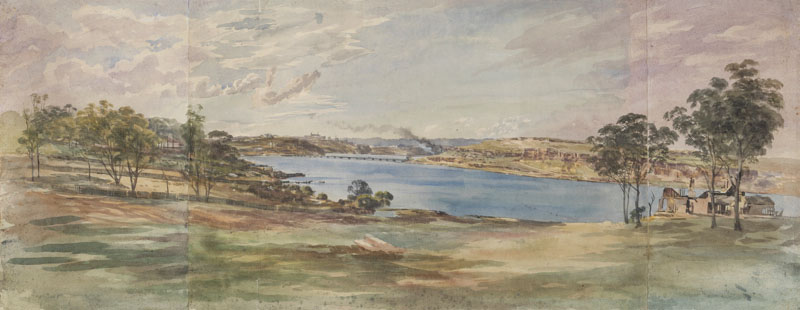evolve*
Date Built: 2008
Architect: Jahn Associates
13 storeys, 47 apartments. Waterfront tower facing Waterfront Park. Winner of the 2009 UDIA High-density Housing Award. Site of CSR caneite factory
Evolve & Waterfront Park
1850
Small-scale quarries were reshaping Pyrmont by the 1840s, to supply ships’ ballast, and for buildings: barges and ships loaded ballast and cargo at the western tip of the peninsula, near the evolve* site. After the 1850s gold rush, Pyrmont yellow block sandstone was in huge demand for the impressive public buildings that transformed the face of Sydney. Teams of horses dragged great blocks of sandstone through Pyrmont and Ultimo to building sites.
Other activities sprang up on the shore. Thomas Chowne bought land at Elizabeth Macarthur Bay in 1840, and built ships. This initiative attracted other processes that were necessary but noxious. After 1857 a wooden bridge from the *evolve site to Glebe Island – where the later swing bridge stands – carried cattle to (and carcasses from) Glebe Island abattoirs. City Iron Works opened on the Evolve site in 1865, and flourished. By 1871:
The City Iron Works employ sixty men. Scrap iron is worked up here and pig iron is puddled [in furnaces, to produce wrought iron]. About 100 tons a month is rolled here, and railway wheels and tires for contractors’ locomotives have also been turned out.
This great enterprise burned 2,500 tons of coal each year, and produced (among many other things) angle iron for Louisa, the first iron ship built in Australia. Until the arrival of the Colonial Sugar Refining Company, the City Iron Works dominated the Pyrmont shoreline. Already by 1850 Pyrmont boasted 130 dwellings. Pubs opened: so did churches – a Presbyterian Chapel in 1842, St Bartholemew’s Anglican Church in 1850, a school in Mount Street in 1857, and St Bede’s Catholic Church in 1867.












